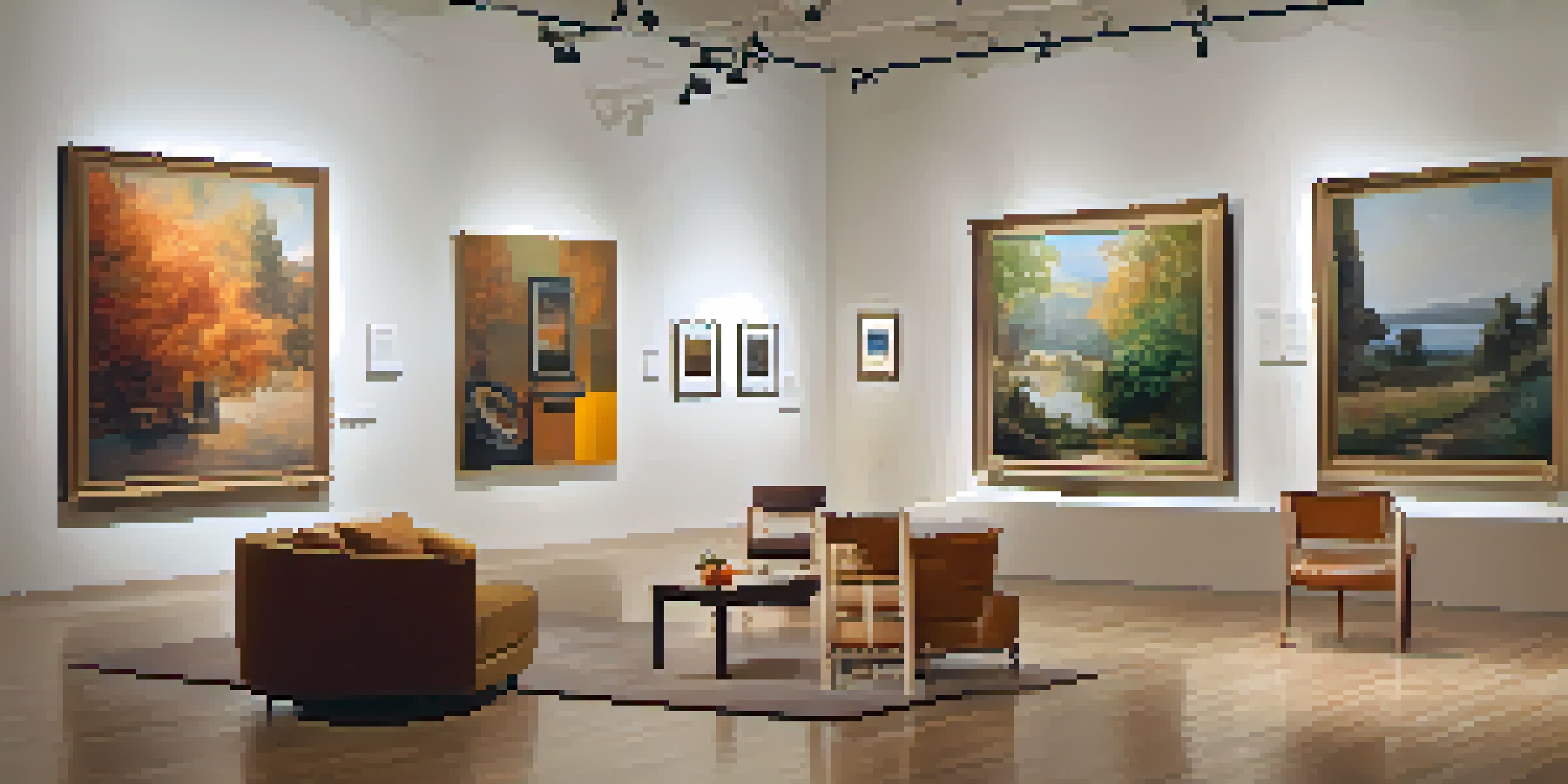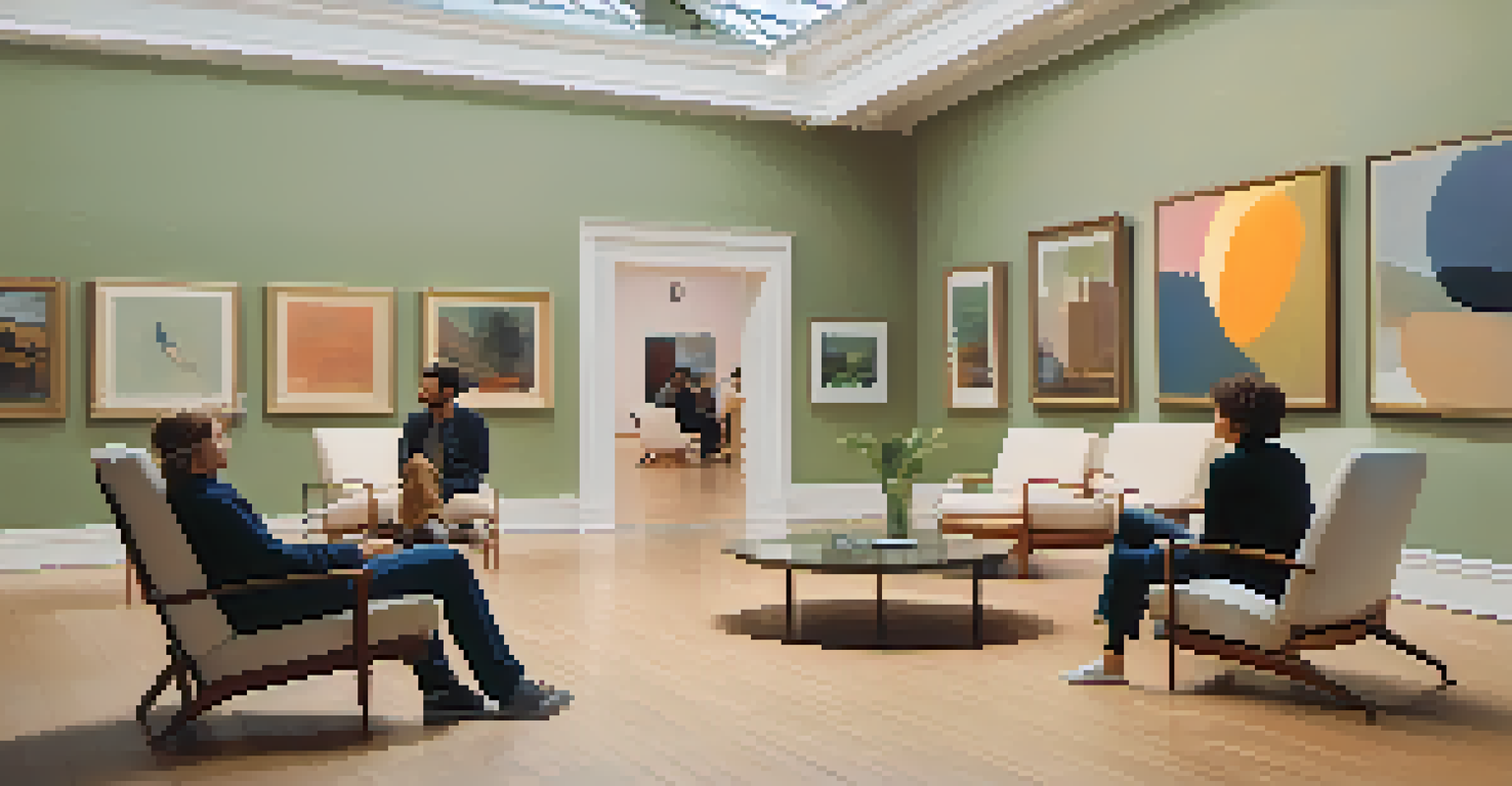Designing an Inviting Layout for Your Art Exhibition

Understand Your Audience for a Tailored Experience
Before you even think about layout, it's essential to understand who will be visiting your exhibition. Are they seasoned art lovers or casual visitors? Knowing your audience can help you craft an experience that resonates with them.
Art is not what you see, but what you make others see.
For instance, if your audience comprises families, you might want to include interactive elements or activities for kids. On the other hand, a more sophisticated crowd may appreciate a quiet space for contemplation.
By putting yourself in your visitors' shoes, you can create an inviting atmosphere that encourages engagement and enhances their overall experience.
Create a Flow: How Visitors Navigate Your Space
A well-thought-out layout can guide visitors naturally through your exhibition. Think of it like a story; each piece should lead to the next, creating a narrative that unfolds as they walk.

You can achieve this by arranging artworks in a logical sequence or thematically grouping them. Pathways or visual cues can help direct foot traffic, ensuring visitors don't miss any key pieces.
Know Your Audience's Needs
Understanding your audience allows you to create an engaging experience tailored to their interests.
A seamless flow not only enhances the visitor experience but also encourages them to spend more time exploring, deepening their connection to the art.
Lighting: Set the Mood and Highlight Artwork
Lighting plays a crucial role in how art is perceived. The right lighting can create an inviting ambiance and draw attention to specific pieces, while harsh or inadequate lighting can detract from the experience.
The best way to predict the future is to create it.
Consider using a combination of natural light and adjustable spotlights to enhance the artworks. For instance, soft, warm lighting can create a cozy atmosphere, while focused lighting can highlight intricate details.
Experiment with different lighting setups before the exhibition opens to ensure each piece is showcased to its fullest potential.
Incorporate Comfortable Spaces for Reflection
Art is not just about viewing; it's also about experiencing and reflecting on what you've seen. By incorporating comfortable seating areas, you invite visitors to pause and contemplate the artwork.
Consider placing benches or lounge chairs strategically throughout the exhibition, especially near particularly impactful pieces. This encourages a deeper connection and can stimulate conversations among visitors.
Design a Cohesive Flow
A well-planned layout guides visitors naturally through the exhibition, enhancing their connection to the art.
Creating these reflection spaces can transform your exhibition from a simple viewing experience into a more immersive event.
Use Color and Design to Enhance the Experience
The colors and design elements of your exhibition layout can significantly influence the atmosphere. Consider using a color palette that complements the artworks while also evoking specific emotions.
For example, warmer colors can create a welcoming vibe, while cooler tones might evoke calmness. Additionally, design elements such as signage and walls should align with the overall theme of the exhibition.
By harmonizing the colors and designs, you can create a cohesive look that enhances the viewer's experience and fosters a connection with the art.
Incorporate Interactive Elements for Engagement
Adding interactive elements to your exhibition can significantly enhance visitor engagement. Consider incorporating touchscreens, QR codes, or even live demonstrations to create a dynamic experience.
For instance, a touchscreen could provide additional context about the artwork or the artist's process, allowing for a deeper understanding. Similarly, live demonstrations can bring art to life and draw in curious visitors.
Incorporate Interactive Features
Adding interactive elements can significantly boost visitor engagement and create lasting memories.
These interactive features not only make the exhibition more exciting but also help to create lasting memories for attendees.
Gather Feedback for Future Improvements
Once your exhibition is underway, don't forget to gather feedback from your visitors. This can provide invaluable insights into what worked well and what could be improved for future events.
Consider setting up a feedback station or using digital surveys to make it easy for attendees to share their thoughts. You might discover that certain aspects resonated more than others, or that visitors had suggestions you hadn’t considered.

By actively seeking feedback, you show that you value your audience's opinions and are committed to continuously enhancing their experience.
Promote Your Exhibition Layout to Attract Visitors
Once you've designed an inviting layout, it's time to share it with the world. Utilize social media, newsletters, and local press to spread the word about your exhibition and its unique features.
Create enticing visuals that showcase your layout and the artworks featured. Highlight any interactive elements, comfortable spaces, or special events that may draw in visitors.
The more people know about your thoughtfully designed exhibition, the more likely they are to attend, ensuring your hard work pays off in foot traffic and engagement.